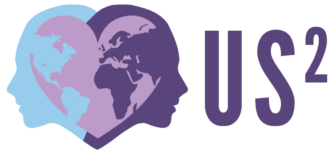In today’s hyper-connected world, the media plays a powerful role in shaping societal norms and beauty standards. From advertising to fashion, we are bombarded with images of a narrowly defined “ideal” appearance. However, these promoted beauty standards can perpetuate lookism, fostering discrimination and negative self-perception among individuals who do not “fit the mold”. As we strive to build an inclusive and accepting society, it is crucial to recognize the media’s impact on lookism and understand the importance of intentionally embracing diversity and promoting body positivity.
The media’s portrayal of beauty often revolves around a specific set of features, body types, and skin tones that are deemed “desirable.” Advertisements, TV shows, and magazines predominantly showcase images of flawless, airbrushed models, leading to unrealistic beauty ideals. The fashion industry, too, often adheres to these limited standards, dictating what is considered “en vogue” and perpetuating a homogenized beauty image.
Such rigid beauty standards can severely impact people’s self-esteem and perceptions of themselves. When individuals do not conform to these ideals, they may feel inadequate, unattractive, or unworthy of acceptance. This negative self-perception can lead to body dysmorphia, eating disorders, and even mental health issues. Moreover, it fosters a culture of comparison and judgment, where individuals may develop prejudices against others based on their appearances, further perpetuating lookism.
One glaring example of media-driven beauty standards is the prevalent “thin ideal” perpetuated by fashion brands and advertisements. This ideal often leads to body shaming and unrealistic expectations, affecting people’s self-worth and confidence. Additionally, the emphasis on fair skin as the epitome of beauty in many cultures has resulted in skin-lightening products and practices that propagate harmful colorism and discrimination.
US²’s core principle of “We must intentionally include so as not to unintentionally exclude.” holds immense importance in combatting lookism. By consciously promoting diverse representations of beauty in the media, we can challenge the prevailing beauty norms and celebrate individuality. Brands that embrace models of various body shapes, skin tones, and features create a more inclusive space for all individuals to feel valued and accepted.
Dove’s video ‘Toxic Influence: A Dove Film‘ within the Dove Self-Esteem Project is a decisive step towards redefining beauty standards. By shedding light on the negative impact of beauty filters and digitally altered images, Dove encourages self-acceptance and authenticity. The film strives to promote healthy self-esteem, fostering a culture that values inner beauty over unattainable ideals.
“Once we know better, we must do better.” Also applies to the media’s responsibility in eradicating lookism. Instead of perpetuating unattainable beauty standards, media platforms need to strive to showcase authentic representations of real people. By featuring diverse talents and celebrating unique attributes, we can pave the way for a more inclusive society that appreciates beauty in diversity.
Lookism, perpetuated by the media’s influence on beauty standards, has far-reaching implications on individuals’ self-perception and interactions with others. Recognizing the role media plays in shaping these standards is the first step towards challenging lookism and promoting inclusivity. Embracing diversity, body positivity, and authenticity in the media can revolutionize societal beauty norms and lead us to a more accepting and compassionate world. Let us take a stand against lookism, celebrate individuality, and foster an environment where everyone feels valued and accepted just the way they are.




